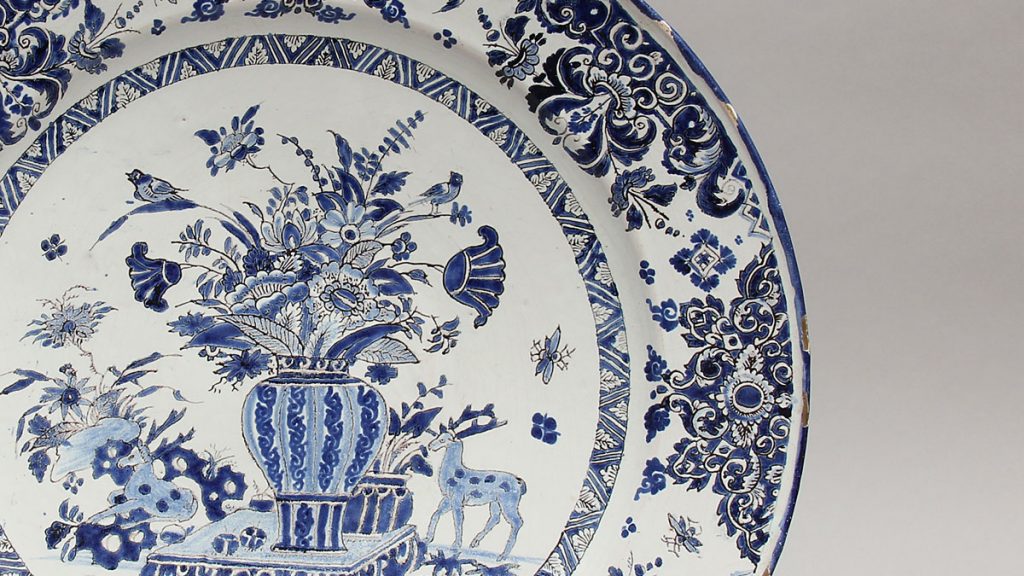This collection surveys the production of some of the most important centres of production of tin-glazed earthenware in France, where the wares were known as faïence. Knowledge of tin-glazing reached France in the second half of the sixteenth century when Italian artisans settled in the cities of Rouen, Lyon, and Nevers. In the seventeenth and eighteenth centuries, production spread to other centres such as Marseilles, Moustier, and Sceaux.
Tin-glazed earthenware was used in the making of both functional and ornamental objects. Pieces in the Gardiner Museum’s collection also show how faïence makers first worked under the influence of Italian maiolica before turning to Chinese porcelain as their main source of inspiration.
Faïence provided a less expensive alternative to Chinese porcelain and to the European hard-paste and soft-paste porcelain produced in the eighteenth century. The discovery of kaolin sources in France, which enabled the production of more durable hard-paste porcelain, as well as the spread of less expensive creamware, caused the decline of the faïence industry in the late eighteenth century.
The Gardiner’s collection of French faïence was donated by Pierre Karch and Mariel O’Neill-Karch.
1. Charger (detail), France, Rouen, attributed to the Poterat manufactory, late 17th century, The Pierre Karch and Mariel O'Neill-Karch Collection, G15.8.1
2. Charger (detail), France, Rouen, attributed to the Poterat manufactory, late 17th century, The Pierre Karch and Mariel O'Neill-Karch Collection, G15.8.1
3. Hound’s Head Stirrup Cup (detail), England, c. 1770s. Gift of Jean and Kenneth Laundy, G08.2.45
4. Pair of Shoes (detail), England, possibly London, 1705-1715, Gift of George and Helen Gardiner, G83.1.549.1-2. Photographer: Toni Hafkenscheid
5. Dish with Scenes of the Abduction of Europa (detail), Italy, Faenza, Attributed to the Master of the Bergantini Bowl, c.1537, Gift of George and Helen Gardiner, G83.1.351
6. Bird Dish (detail), England, possibly Staffordshire, possibly by Thomas Toft (d.1689), c.1690-1710, Gift of George and Helen Gardiner, G87.1.3
7. Sculpture of a Stove (detail), Switzerland, Winterthur, c.1650, The Hans Syz Collection, G96.5.418

